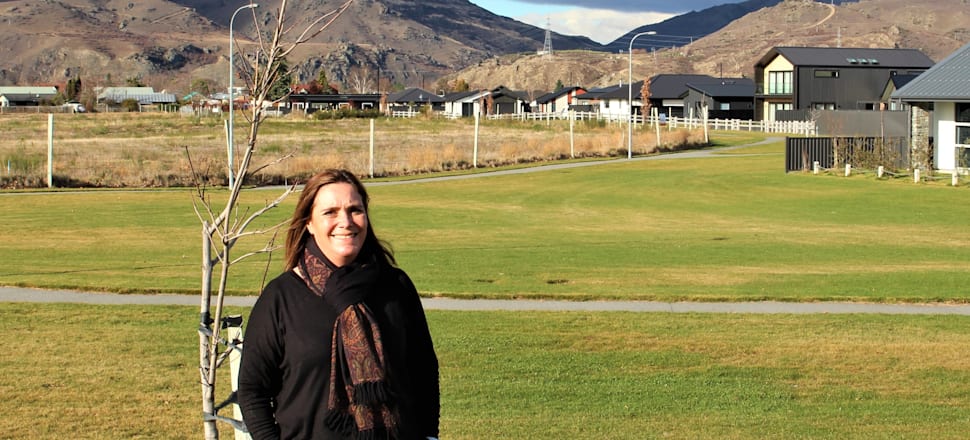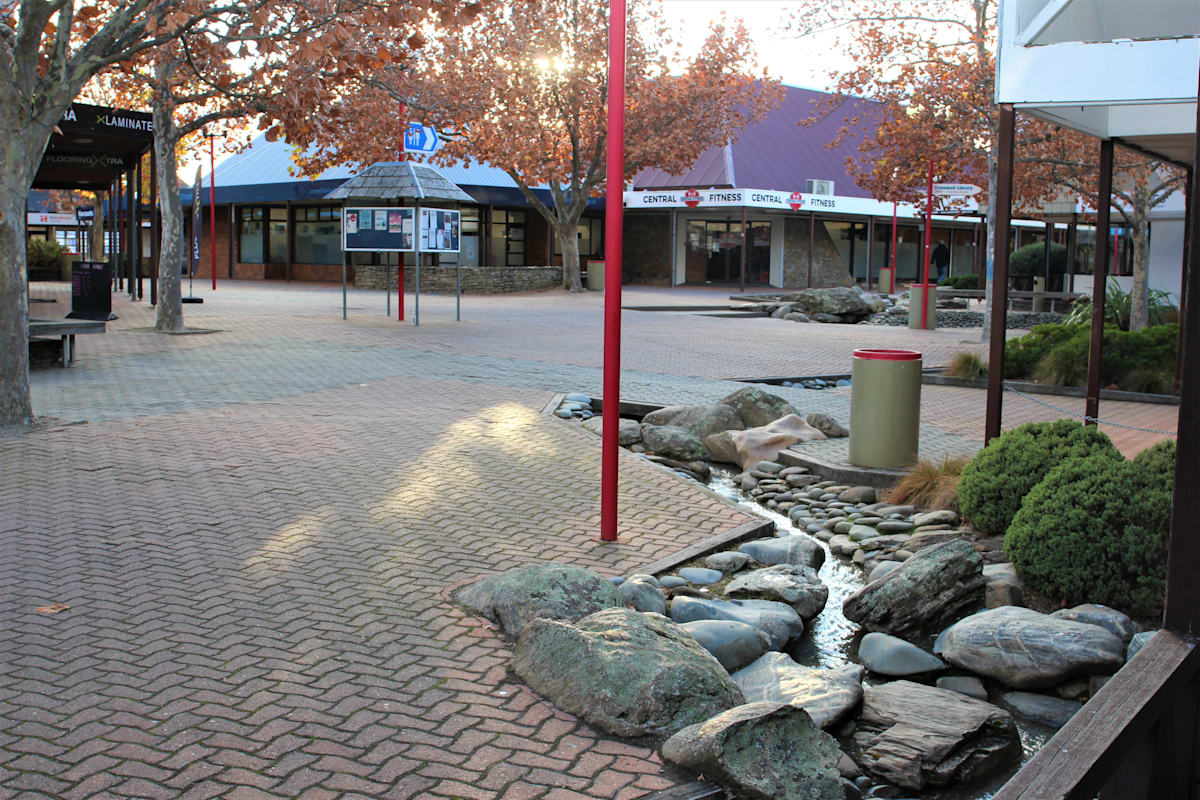
Cromwell’s council is cashing in on rising land values to fund a suite of civic amenities costing tens of millions of dollars leaving its ratepayers still among the least-indebted in the country
A $73.5 million council spend-up is set to give the small Central Otago town of Cromwell a long overdue makeover and, remarkably, ratepayers will feel little pain.
A quiet property-development foray by Central Otago District Council (CODC) will pay the bulk of the bill, although not everyone is rejoicing.
Excitement is beginning to stir around the town as plans are drawn up for a long-awaited $16 million cultural centre on a lakeside site that will also boast a new $6 million museum. These projects come at a tidy additional sum of $9.5 million for project management, site preparation and landscaping.
Meanwhile, in Cromwell’s gloomy Clyde Dam-era shopping mall, Wellington architects are creating a new vision for what is an embarrassingly dated feature of the town. There’s $13.5 million in the pot for that project plus $5.5 million for a resource centre. A further $12.3 million has been tagged for a council service centre and $11 million for a library.
Cromwell’s roughly 8000 residents are sitting on a cash cow thanks to a boom in land values. The town’s proximity to Queenstown and Wanaka, popular cycle trails, low crime, vineyards and sunshine have driven up values more than in the council’s three other wards of Vincent (Alexandra), Teviot Valley (Roxburgh) and Maniototo (Ranfurly).
Cromwell Community Board chairperson Anna Harrison says having cash reserves means the council doesn’t have to borrow heavily to fund capital projects, keeping costs down for ratepayers.
“We still have to rate for the depreciation, however, which is not funded by our reserves. We don’t directly rate for the capital expenditure. We spread the rating charges across the generations so it becomes intergenerational.
“The cash reserves used to fund the capital expense are paid back through the depreciation that ratepayers pay across the years, the same as if we borrow externally to fund any capital expenditure.”

The CODC has the fourth-lowest cost of borrowing per household in the country, according to 2021 data from NZ Taxpayers Union. The lobby group says the national average cost per household of council borrowing is $199 versus $3 in Central.
For about four years, the effectively debt-free council has been boosting its bank balance by selling public land in the midst of a seemingly never-ending property boom.
In Cromwell, and on a smaller scale in Alexandra, it is profiting from joint-venture residential developments that buyers are snapping up.
Rates will still go up next month – 7.5 percent on average across Central Otago – but without the land deals that figure would have been much higher.
From Cromwell’s housing development at Gair Ave, the council recently banked more than $9 million from 78 sections, and there is more to come as the project reaches its last stage.
The 50:50 joint venture partner is Queenstown-based developer AC/JV Holdings, owned by Alistair Hey and the late Clark Proctor. Hey saw out the project alone after Proctor’s death in 2020, but the partnership is not continuing for the final stage at Gair Ave.
The council declines to explain why, although it says there have been no delays with the development following a “successful partnership”.
Hey’s company Imagine Capital, meanwhile, is in a joint-venture subdivision development with the council in Alexandra.
Hey has twice been convicted of assault after altercations with neighbours, and of intentional damage, but was not subject to any background checks before the partnership.
Harrison says no members “had a relationship” with Hey before council staff selected his company to partner with.
“The partnership was a well vetted process that went out to the open market and the highest scoring tenderer won the project. There are always risks associated with projects of this nature, but all the market indicators aligned with a successful outcome, so it was deemed an acceptable risk,” she says.
Lucrative exercise
CODC’s executive manager of planning and environment, Louise van de Voort, says if the council had sold the land undeveloped, the return would have been less than half of Gair Ave’s.
Plans have been drawn up for a “mixed housing typology” for the next stage of that development.
The aim is for intensified building within existing town boundaries, as outlined in the council’s spatial plan. A new 50:50 partner is about to be signed up.
Figures are not available for the council’s 71-section 5.5ha block between Dunstan Rd and Molyneux Estate in Alexandra, which will benefit that ward’s ratepayers. The sales website, however, shows that of 51 sections released for sale, just three remain, and prices are listed at about $370,000 for a 866sq m site.
Affordable housing has been as scarce as hens’ teeth in Cromwell for years and a labour shortage has become part of life for business owners.
Van de Voort says council staff have been looking for external funding to make affordable housing part of the Cromwell development. It has always been intended that developments provide housing for a wide demographic.
But a recent application to Kainga Ora’s infrastructure acceleration fund was found to be ineligible.
Now, prompted by the Central Otago Affordable Housing Trust, the council is surveying Central Otago residents to gauge support for donating land from Gair Ave and Dunstan Park to a “secure homes” project. The council says the initiative would mean $8 million less for each area for local projects. Midway through the survey’s open period, 213 people had responded.
Industrial-strength profits
Although Cromwell’s residential public-private developments have been lucrative, there’s even more at stake for the council from industrial developers: going it alone to subdivide, set up and sell larger chunks of land. It recently sold 10 of 30 industrial sections for $3.4 million in a go-it-alone development off Cemetery Rd, followed by 12 more, all of which went for more than the asking prices, says real-estate agency Colliers.
The total value of lots sold - subject to the issue of titles - is about $10 million plus GST, according to a Colliers report. Another five lots could be sold towards the end of this year pending the outcome of a zoning change.
CODC reports entering its last long-term plan (LTP) financial forecasting period with no debt and cash reserves of about $14 million. The local body is eyeing a further $40 million from future land sales for the LTP period to 2031. That includes the proceeds from a 52ha block also tagged for industrial development.
But the council says its estimate is conservative, and business sources back that up, saying with nearby sales averaging $350-$550/sq m, up to five times that amount is not unrealistic.
There is a cost, however. On the spending side of the LTP, the council is budgeting $333 million for new infrastructure to accommodate growth in the district.
Everyone wants a piece of Cromwell
Cromwell has been one of the country’s fastest-growing towns for at least six years. As the boom began, developers led the charge on where and how new houses and businesses would be constructed. In response, about four years ago, the council began a major planning exercise under the title "Eye to the Future" to pull back control.
The Cromwell masterplan and spatial framework involved much public consultation and Arrowtown-based consultancy Rationale has been working on the documentation since the project was launched.
In a Rationale statement early in the process, it was observed that much like Queenstown and Wanaka, Cromwell had been “somewhat caught out” by the speed of growth.
“Development has been occurring through several private plan changes and large-scale resource consent applications.”
Spatial plans tagging areas for development and outlining what can go where have now been completed for the Cromwell and Vincent wards, with those for the other two Central Otago wards in different stages of development. While the plans are essential, if existing activity gets in the way staff seem to have little flexibility to accommodate it.

Implementation of Cromwell’s new spatial plan has left three long-established local businesses and users of a popular motorbike track feeling under threat.
The local cemetery, too, along with its abundant rabbit population, has lost some ambience, despite a buffer zone, as the noise, dust and concrete tilt-panels of industry creep nearer.
A metal recycler has been given notice to vacate its plot on the 52ha block tagged for industrial development by 2024, with business owner Graham Rollo at a loss as to where to find an alternative site. On June 16, however, he told Newsroom the council had relented and offered a lease extension.
Next door, at Central Wormworx, owner Robbie Dick says no extension has been granted, and at age 75, he is not looking forward to packing up the thriving operation when his lease expires next year.
The local motorcycle club, whose track is on the 52ha block, will also have to vacate, and in town, beside Cromwell’s iconic Big Fruit sculpture, a mini-golf business of the same vintage as the worm farm has been given a much-reduced tenancy. This is to make way for a spatial plan-inspired “world of difference” park that may never eventuate.
Although inked on the plan, the council concedes the park may not go ahead but says the possibility has to be allowed for.
Van de Voort confirms the 52ha block is being rezoned from a rural resource area to an industrial area, but the legal processes are not yet complete.
“The Cromwell Community Board has not made any decisions on the development of the land. Decisions around leases are made to enable the board to optimise subdivision layout when considering development of the land in the future. If the land is occupied at the time of development, that is likely to impede physical works such as installation of infrastructure and internal roads.”
The two environmentally oriented businesses and the motorbike club have accepted the inevitability of moving, but in town, determined Cromwell mini-golf owner Shona Rae is fighting for a longer lease to ensure the future viability of her business.
Her issue has gone back and forth to the Cromwell Community Board, always in closed meetings, for more than a year.
All debate about land sales and development has also occurred in closed meetings and an Official Information Act (OIA) request by Newsroom for reports relating to the developments has revealed little.
The council initially requested Newsroom pay for the information, but waived the fee in the face of a complaint that it should be freely available.
*Made with the support of the Public Interest Journalism Fund*








